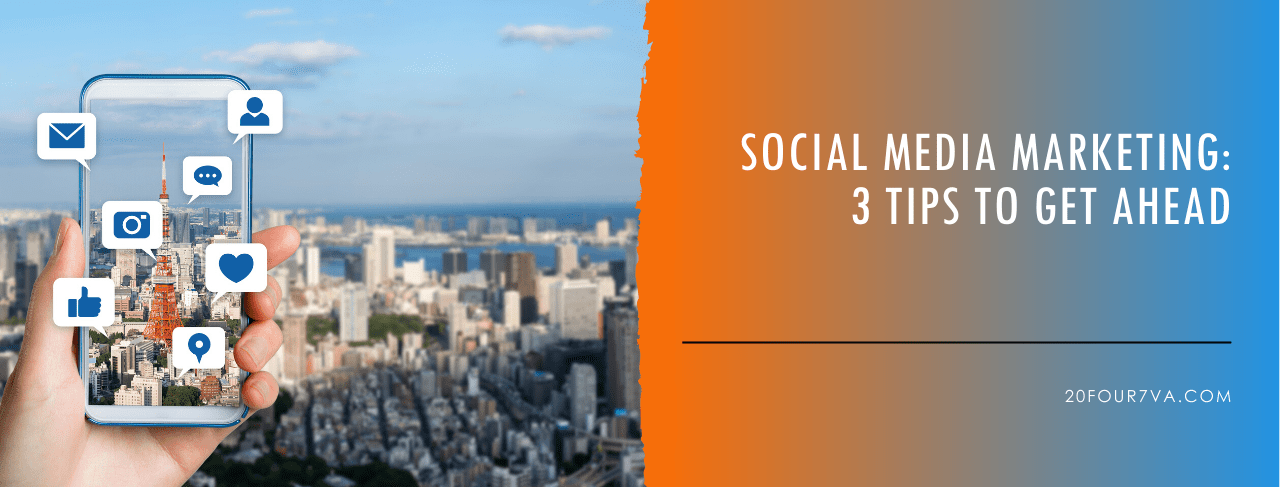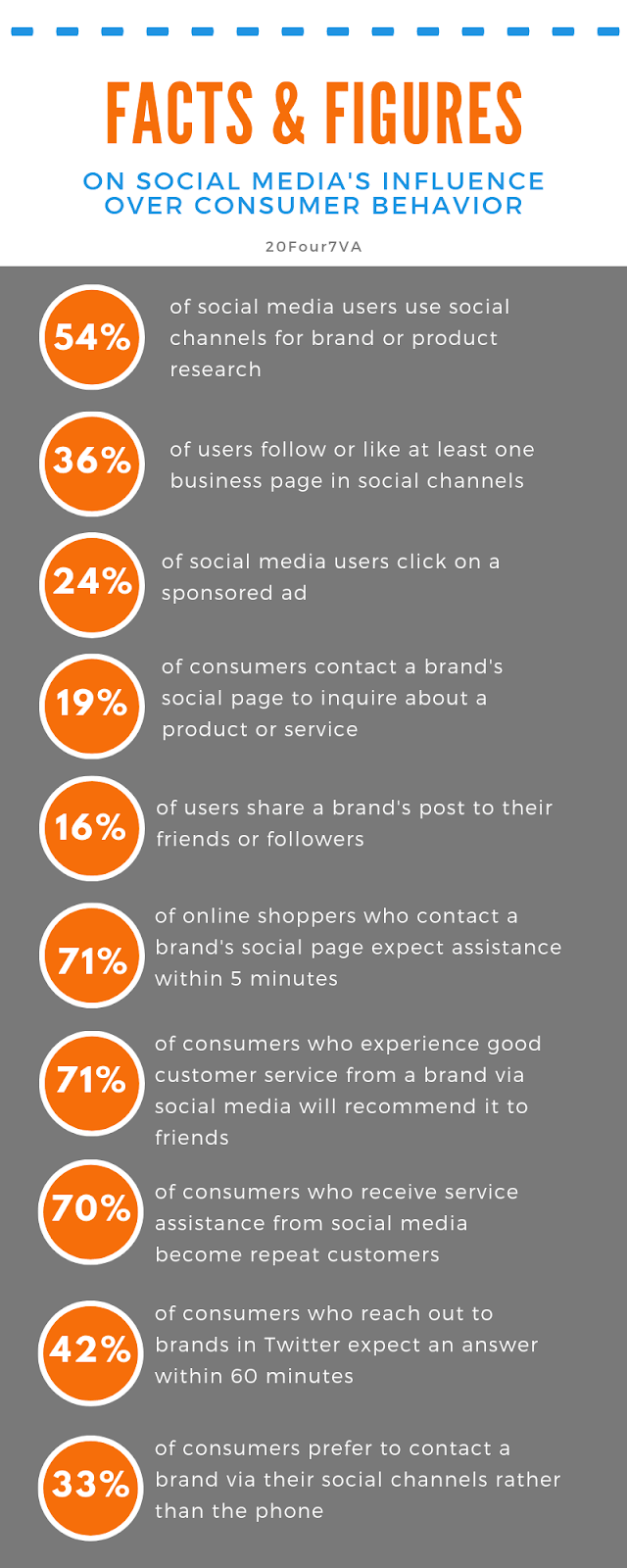Social Media Marketing: 3 Tips to Get Ahead

An effective social media marketing strategy gives small businesses so many opportunities for finding customers. Just check out these excellent social media marketing stories.
A mother working on a shoe-string budget wanted her children to have healthy meals at school, so she put together nutritious lunch boxes and shared photos of them on Facebook. Eventually, her budget-friendly lunch boxes attracted thousands of followers and prompted her to become a solopreneur.
This is the story of Easy Lunch Boxes, an idea that has evolved into a company selling lunch containers as well as virtual and print materials for meal preparation.
Established companies can also use social media for re-branding or connecting to a different audience, such as in the case of Red Bull:
Although the energy drink brand has been around for decades, Red Bull sought to further expand its market by introducing new flavors. In one campaign, the company aimed to promote its tropical or Summer Edition drink. The brand started posting summer-themed video content and photos using the #thissummer hashtag on social media.
Their campaign reached more than a million people. More importantly, the company saw a 7-point decrease in the unconvinced market. They succeeded in their aim to shed their predictability and have people see Red Bull in a brand new light through its new flavor.
This is the power of social media marketing: it can help a business find and connect with the right people, no matter how young or old they are in the industry. That’s why it’s no surprise that businesses of all shapes and sizes have flocked to Facebook, Twitter, Instagram, and Pinterest!

These findings from the Global Web Index illustrate how much social media platforms have influenced everyday life:
- 54% of social media users search channels like Facebook and Twitter for product or brand research
- 36% followed or liked a brand on social websites
- 24% clicked on a sponsored ad
- 19% used a brand’s social channels for inquiry
- 16% shared a brand’s post to their friends or followers
A separate study from Ambassador took a closer look at social media for business and revealed the following:
- 71% of online shoppers expect practically real-time assistance from a brand’s social channels (within 5 minutes of contact)
- 71% of consumers who experienced good customer service from a brand’s social channels are more likely to recommend it to others
- 70% of people who received service assistance through social media became repeat customers
- 42% of consumers who reached out to brands in Twitter expect an answer within 60 minutes of contact
- 33% of consumers prefer to contact a brand via social platforms than phone
With so much on the line, you can’t just follow any social media marketing guide that you encounter. So how can you leverage these channels to attract and engage with your target audience?
Here are some of the best social media management tips to help you out:
1. Create a clear buyer persona.
A buyer or customer persona represents the key characteristics shared by people who belong to your target market. Instead of observing random audience behavior, creating a buyer persona will help you collect emotive information. That means identifying customer demographics as well as the intricate details that make customers tick.
Who are you selling to or trying to connect with? What type of content will resonate more with your target market? When you have a well-defined buyer persona, you have clear, precise answers to these questions.
Use these questions to help you sharply outline your buyer persona:
- How old are they?
- Where do they live?
- What is their gender?
- What is their marital status?
- What is their education level?
- If they are working, what is their industry and job level?
- What is their typical day like?
- What do they do for fun and how much time do they spend in it?
- What kind of websites do they frequent and for what reason?
- What makes them angry, happy, or stressed?
- What do they worry about?
- What are they proud of?
- What do they hope to achieve?
- What can make or ruin their day?
- Where do they prefer to shop?
- How do they prefer to contact a brand?
- How do they define a good deal?
A thoroughly researched customer persona helps you with creating content and experiences that people will remember. It helps you find the most appropriate social channels to use and the best ways to use them. Having one will also help you create products and services that give people a bang for their buck while adding value to their life.
2. Know your social media priority.
Now that you’ve identified your ideal buyer persona, you’re equipped to move on to the next step: knowing your social media priority.
Equally sharing content and resources across all platforms seems to be a good idea, but it’s not always a feasible one. For one thing, it can be costly and time-consuming. For another, social channels have different algorithms and strengths. What works for one might not have the same impact on another.
So when you’re creating a social media marketing plan, remember to determine your social media priority. To help you with this task, here are some statistics about each platform:
Facebook:
- Has 2.32 billion active monthly users as of 2019, making it the next most popular website after Google
- Majority of US users are between the ages of 25-34 years old
- Users aged 65 and above have doubled up since 2012; Teenage Facebook users declined from 71% (2014) to 51% (2018)
- Facebook contact boosted brand confidence for 66% of consumers
Twitter:
- Has 321 million active monthly users as of 2019
- 40% of Americans between the ages of 18-29 years old use Twitter
- 46% of users visit Twitter every day, with 26% frequenting the platform several times a day
- Tweets with attached videos have 10 times higher engagement and are 6 times more likely to be shared
Instagram:
- Has 1 billion active monthly users as of 2019
- About half of Instagram users are between the ages of 18-34 years old
- 80% of Instagram users follow at least one brand on Instagram
- 60% of users admit to discovering a brand through Instagram
- 72% of teenagers in America are Instagram users
Pinterest:
- Has over 250 million monthly active users as of 2019
- 34% of Americans between the ages of 18-49 years old use Pinterest
- 81% of Pinterest users are women
- 83% of Pinterest users made purchase decisions based on brand Pins
- 77% of users discovered a brand through Pinterest
- 66% of users source Pinterest for finding last-minute gift ideas
If your target consumers are women, you might want to funnel your resources on Pinterest. If your services are for millennials, Instagram is the best place to put in your investment. Different people use social channels in varying levels of frequency and purpose. You need to know which channels would best help you reach your customers.
3. Be better at telling a story.
“Content is king” is probably one of the oldest phrases in online business marketing – and for good reason. With so many brands to choose from, people are just wired to respond more to campaigns with emotive content. The only way to grab someone’s attention is to evoke a reaction.
The problem is, while brands still consider content important, they fail to recognize that the medium and ways for sharing said content have changed. According to content marketing expert Gary Vaynerchuk, so many companies today follow the same content strategy they did 10 years ago. Why?
Apart from character limits, social media – with its endless pit of information – just tend to curb people’s interest and concentration. So, how can you tell a story with a 140-character limit? How can you bolster your place in someone’s mind in only 6 or 60 seconds?
Take a leaf out of the Gary Vaynerchuk social media marketing book. Use this inverted pyramid for content curation:

- Document main content. Put together long-form pieces of content like blog articles, vlogs, podcasts, or webinars. Use it to document your entrepreneurial journey, outline your vision, or to tell people about your wins, losses, and ambitions.
- Re-purpose main content into micro pieces. Create quotes, Tweets, memes, GIFs, or Instagram stories derived from your main content.
- Distribute in social media. Here are 5 tools to help you share social media content.
TIP: Planning your social media content is one thing, producing it is another. Hire a content writer VA to help you put your content together. Content writers know how to strike a balance between engaging and informative – an essential recipe in social media posting.
For modern-day businesses, social media go beyond raising brand awareness. Instead, they have become the channels that people prefer for interaction, the platform of choice for quick brand research, and the yardstick that people use to gauge brand credibility. These social media tips should help you get ahead of the game.
Recommended reading: 60 Tasks You Can Outsource to a Virtual Assistant Team to Grow Your Business











These 3 are very effective in social media strategy to convert one of the visitors into sales.